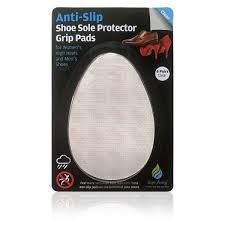The Importance of Shoe Soles: A Foundation for Comfort and Support
When it comes to footwear, the sole of a shoe plays a crucial role in providing comfort, support, and protection to the wearer. The sole is the foundation of any shoe, bearing the weight of our bodies and absorbing the impact of each step we take.
Shoe soles come in various materials, each offering different benefits depending on the type of activity or terrain they are designed for. For example, rubber soles are known for their durability and traction, making them ideal for sports shoes or outdoor activities. On the other hand, leather soles are often used in formal shoes for their elegant look and ability to mould to the shape of the foot over time.
One key feature of a shoe sole is its cushioning properties. A well-cushioned sole can help reduce fatigue and prevent foot pain by absorbing shock from walking or running. This is especially important for athletes or individuals who spend long hours on their feet.
In addition to cushioning, shoe soles also provide support to the arches and heels of the foot. Arch support is crucial for maintaining proper alignment and preventing conditions such as plantar fasciitis, while heel support helps distribute weight evenly and reduce pressure on sensitive areas.
Furthermore, shoe soles can offer additional features such as stability control, motion control, or energy return technology to enhance performance and comfort. These advanced technologies are often found in athletic shoes designed for specific sports or activities.
In conclusion, the sole of a shoe is more than just a protective layer between your foot and the ground – it is a fundamental component that contributes to your overall comfort, support, and performance. Choosing shoes with appropriate soles that match your needs can make a significant difference in how you feel throughout the day. So next time you slip on a pair of shoes, take a moment to appreciate the importance of their soles in keeping you comfortable and supported.
Six Essential Tips for Selecting and Maintaining Durable and Comfortable Shoe Soles
- Choose shoe soles with good traction to prevent slipping.
- Opt for cushioned shoe soles for extra comfort, especially if you’ll be on your feet all day.
- Rotate your shoes to allow the soles to decompress and maintain their shape and support.
- Consider getting slip-resistant soles for added safety in slippery conditions.
- Regularly clean and inspect your shoe soles to prolong their lifespan.
- Replace worn-out shoe soles to prevent discomfort and potential foot problems.
Choose shoe soles with good traction to prevent slipping.
When selecting shoe soles, opt for ones with excellent traction to minimise the risk of slipping. Shoes with good traction provide a firm grip on various surfaces, enhancing stability and reducing the likelihood of accidents caused by slippery conditions. Whether navigating wet pavements or slippery floors, choosing shoes with reliable traction can help you move confidently and safely, ensuring a more secure footing wherever you go.
Opt for cushioned shoe soles for extra comfort, especially if you’ll be on your feet all day.
When selecting the ideal shoe sole for prolonged periods of standing or walking, opting for cushioned soles can significantly enhance your comfort level. The added cushioning in the sole provides a soft and supportive foundation for your feet, helping to reduce fatigue and alleviate pressure points throughout the day. Whether you’re navigating a busy workday or exploring the city streets, choosing shoes with cushioned soles can make a noticeable difference in how your feet feel, ensuring that you can stay on your feet comfortably all day long.
Rotate your shoes to allow the soles to decompress and maintain their shape and support.
To ensure the longevity and performance of your shoes, it is recommended to rotate them regularly. By alternating the pairs you wear, you give the soles a chance to decompress and regain their shape and support. This simple practice can help prevent premature wear and maintain the cushioning and stability that your feet rely on for comfort. So, remember to give your shoes a break by rotating them, allowing their soles to bounce back and serve you well in the long run.
Consider getting slip-resistant soles for added safety in slippery conditions.
When selecting shoes, it is advisable to opt for slip-resistant soles to enhance safety, particularly in slippery conditions. Slip-resistant soles are designed to provide better traction and grip on various surfaces, reducing the risk of accidental slips and falls. Whether navigating wet pavements, smooth floors, or uneven terrains, shoes with slip-resistant soles can offer added confidence and stability, ensuring a safer walking experience in challenging environments.
Regularly clean and inspect your shoe soles to prolong their lifespan.
Regularly cleaning and inspecting your shoe soles is a simple yet effective tip to prolong their lifespan. Dirt, debris, and wear can accumulate on the soles over time, impacting their traction and cushioning abilities. By maintaining clean soles and checking for any signs of damage, you can ensure that your shoes continue to provide the comfort and support you need for longer. A quick wipe down and visual inspection after each wear can go a long way in preserving the quality of your shoe soles and extending the overall durability of your footwear.
Replace worn-out shoe soles to prevent discomfort and potential foot problems.
It is essential to replace worn-out shoe soles to avoid discomfort and potential foot problems. Over time, the cushioning and support provided by shoe soles can degrade, leading to uneven pressure distribution on the feet and increased risk of injuries. By regularly checking the condition of your shoe soles and replacing them when necessary, you can ensure that your feet are properly supported, reducing the likelihood of pain or discomfort while walking or standing for extended periods. Prioritising the maintenance of your shoe soles is a proactive step towards maintaining good foot health and overall well-being.

